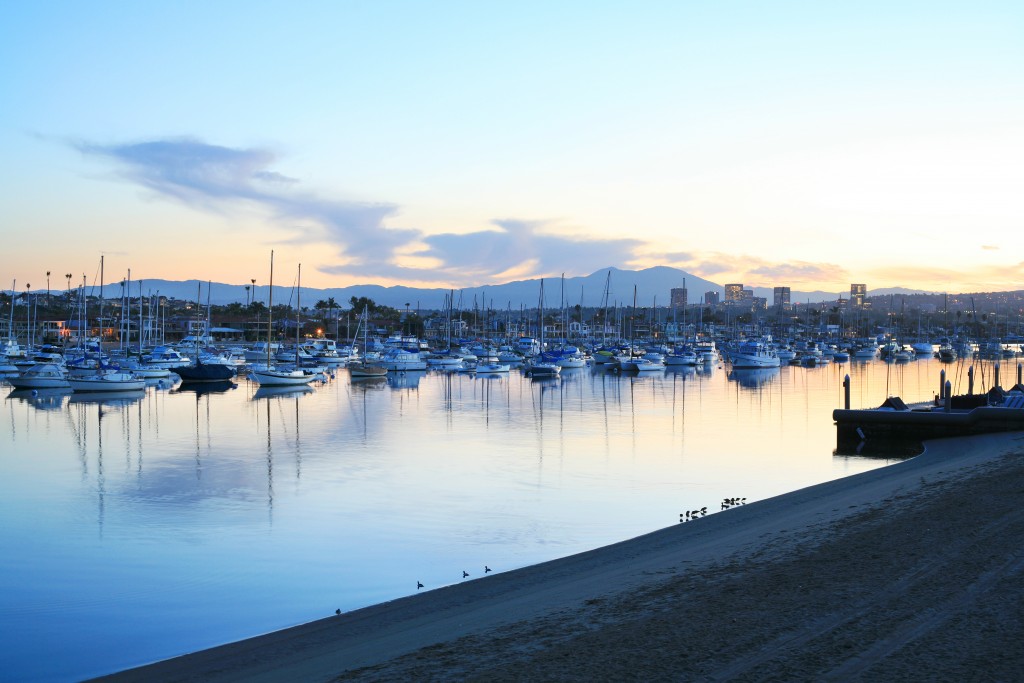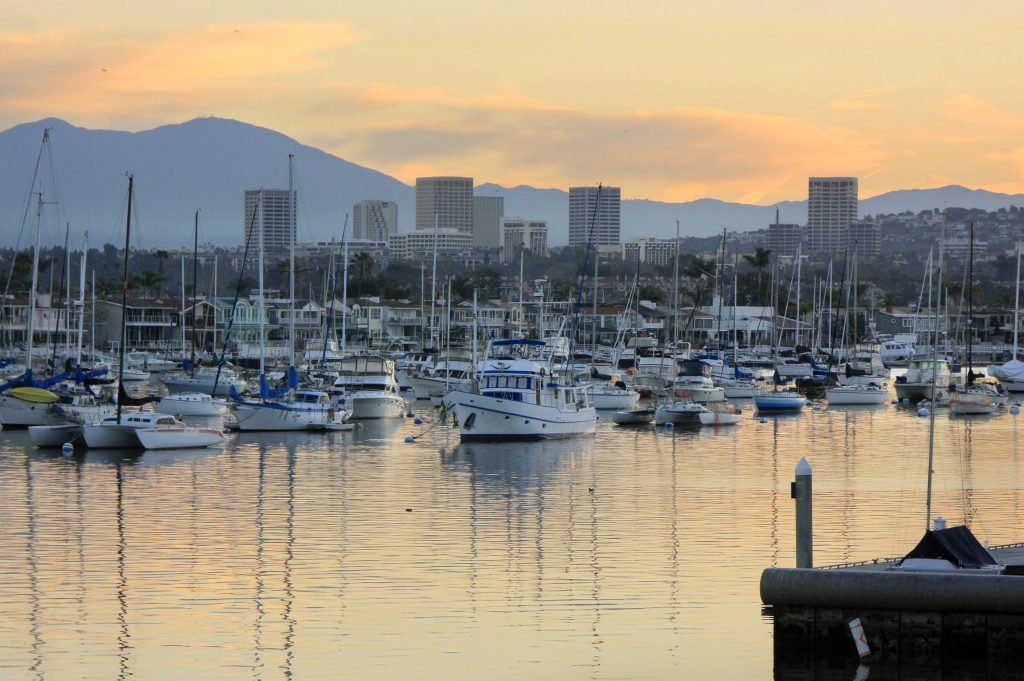
— Photo by Sara Hall ©
Live-aboard vessel discharge, logging pumpout services and sanitation system inspections were at the center of another discussion about revising Title 17 of the Newport Beach Municipal Code, or, the Harbor Code, at a community meeting this week.
As part of their ongoing effort to update the city’s Harbor Code, Harbor Commissioners hosted the community meeting Monday at Marina Park on the Balboa Peninsula to gather input from the community related to the code that governs Newport Harbor.
The Ad-Hoc Committee tasked with reviewing Title 17, and holding several community meetings in the process, consists of commissioners Bill Kenney, Paul Blank and Don Yahn. Harbormaster Kurt Borsting led the meeting, presenting the committee’s suggested changes to the harbor code.
This is the fourth stakeholder meeting in an effort to gather public comment on Title 17, the municipal code that deals with “our beloved harbor,” Kenney noted.
Sections reviewed on Monday included: 17.40 live-aboard, 17.45 sanitation, 17.50 harbor development permits, 17.55 dredging, 17.60 mooring extensions (a new proposed section) 17.65 appeals, and 17.70 enforcement.
These same sections and any proposed changes will be considered by the Harbor Commission (likely at their July or August meeting). They will review the proposed code, possibly make modifications and vote for a recommendation to be forwarded to the City Council.
Kenney encouraged residents to submit public comments or speak at both the upcoming meetings.
Highlights from the forum revolved around live-aboard discharge regulations, and how to log pumpout services, and harbormaster inspection of marine sanitation systems.
By a show of hands, only three of the nearly 20 people in the audience were live-aboard permitees.
The liveliest discussion revolved around how live-aboard permitees should keep discharge logs.
The current harbor code already requires permittees keep a log, which has to be inspected by the harbormaster, but some suggested additional language incorporates commercial pumpout services and how many times per month permitees are required to use pumpout services.
The code requires that a log including the date, time and location waste was discharged, and any supporting documents from the commercial pumpout service providers (such as company issued service records, service invoices, etc.) “shall be available for inspection by the Harbormaster at all reasonable hours and upon request. The log and all supporting documentation shall be submitted to the Harbormaster with the renewal application.”
“The idea of proposing something in this vein was that the current system is the honor system and if we can craft something with folks who are ‘power users’ of the harbor, because they are residing on the water, if we could move to something that is beyond the honor system, it will support the overall goal,” Borsting said.
He asked for suggestions that could work better.

— Photo by Sara Hall ©
“This does not serve that,” replied one live-aboard, referring to the suggested changes.
The recommended language initially suggested that “each live aboard permittee is required to contract with an authorized commercial pumpout service at a minimum of twice a month.”
A local who lives aboard her boat in Newport Harbor took issue with the how often the suggested language required live-aboard permitees to use a pumpout service.
“If you live there by yourself you don’t need the service twice a month,” she said.
She typically uses a pumpout service once every three weeks, she explained, which has always been adequate for her. If it’s two or more people it’s usually needed twice a month. It also depends on the size of the holding tank, she pointed out.
A few of the commissioners suggested changing the requirement to monthly.
Several agreed that if live-aboards called the harbormaster before using the pumpout dock, the log could be verified. A harbormaster staff person can provide a “spot check,” Kenney added.
A call-in system could work for any of the 51 live-aboard permitees who use the pumpout dock, Borsting confirmed.
Although the majority of live-aboards have a commercial service that provides receipts for a log, one audience member pointed out.
It’s a good idea to put in an “either/or clause,” Kenney concluded.
“Either you contract with a (commercial) service and they make their records available or you call the harbormaster (when the permitee is headed to a pumpout dock) and they create a (verified) log,” Kenney explained.
Commissioners agreed with the monthly requirement and the either/or clause.
Another highlight of the meeting came during the discussion about discharge, the use of dye tabs, and inspection by the harbormaster team.
In both the “conditions/regulations” and the “waste and refuse” portions of the live-aboards section, new proposed language states that all vessels that have a marine sanitation device (which all live-aboard permitees are required to have, along with an operable holding tank) are subject to, “at any time,” boarding by the harbormaster (or his or her designee) to inspect the operation and condition of the system, and are subject to the use of a dye tablet to determine if there is any discharge overboard.
A few boaters raised concerns about being subject to boarding “at any time.”
This has been long-debated, Kenney commented. There are protocols that have to be followed, as followed by the U.S. Coast Guard and Orange County Sheriff’s Department Harbor Patrol, both of which have the right to board a vessel at any time.
Illegal discharge probably isn’t being done in the middle of the day, in front of other harbor users, Kenney pointed out. So, if there is reason to suspect illegal discharge, the harbormaster team should inspect the system when it might be happening.
Several people agreed that there is a problem with illegal discharging and that the intent of the language is meant to address the specific issue.
“We all want a cleaner harbor,” Kenney said. “We’re not trying to add additional regulation… we’re trying to address a few key problems.”
The real issue is enforcement, Kenney said, a sentiment echoed my several boaters and harbor users at previous meetings.
“There’s been no enforcement in this harbor for many, many years. And now that the city has taken back the harbor, we have an opportunity. Once the word gets out that these regulations are being enforced, I think that those who are violators will realize that it’s time to get in line.”
At previous meetings, the committee reviewed: 17.01 Definitions; 17.05 General Provisions; 17.20 Vessel Launching and Operations; 17.25 Berthing, Mooring and Storage; 17.30 Harbor Use Regulations; and 17.35 Harbor Development Regulations.
For more information, visit newportbeachca.gov/title17 or contact the Harbor Department at (949) 270-8159 or email title17review@newportbeachca.gov
Like this column? Sign up to subscribe to email alerts and you’ll never miss a post.





Indy needs to announce, ahead of time NOT belatedly, when these meetings by the Harbor Commission are ‘going’ to happen so that boaters can plan to attend and be able to defend their position instead of being overrun by those whom would unnecessary cause them unwarranted problems!
Also remember that the main reason for the pollution in the bay is the runoff from the streets that contain non-biodegradable components and chemicals, that are devastating without proper circulation. Then there is the unaddressed problems of the discharge from the unregistered liveaboards on the many more boats on private docks. About four times plus of those at Moorings!